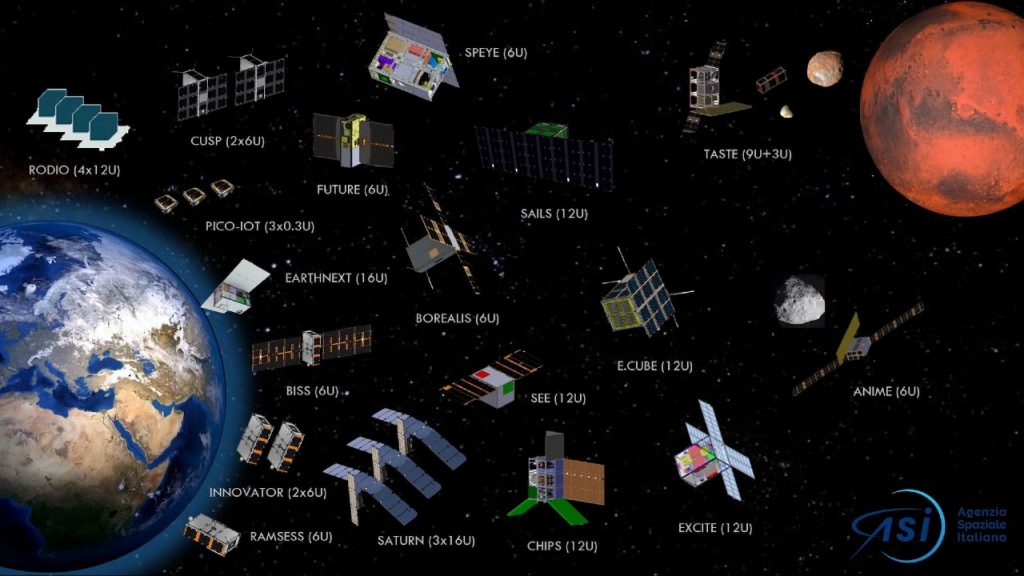Thanks to low costs and rapid development times, Nanosatellites make space accessible and are definitely changing both the market and the space industry. These satellites have played an important role in the “democratization of space”: SMEs, universities, research centers and emerging countries to launch their own satellite.
Generations of scientists and engineers have received unprecedented practical training thanks to CubeSats. Used in constellations, CubeSats works as an alternative or in synergy with traditional satellites in sectors of great scientific-applicative importance such as remote sensing, surveillance tracking, astrophysics, space weather, robotic exploration of the solar system.
Due to growing interest, ASI has focused a lot on this sector, through the establishment of a dedicated organizational unit and the launch of a development program for nanosatellite technologies.
The “Future CubeSat missions” Call saw participation above all expectations: 22 participants from Research Centers and Universities and 78 companies, mainly SMEs. The companies joined individually and collaboratively as encouraged by the call, presenting a total of 49 proposals for highly innovative missions. In less than 4 months from the deadline, ASI finalized the technical evaluation phase, a particularly significant result also in light of the complexity of the assessment.
“The development program for nanosatellite technologies and missions aims to place our country in a condition of consolidated leadership in the sector, the massive participation in the “Future Cubesat Missions” call by the national industry of research centers and University is the clear testimony that Italy is ready to take full advantage of this challenge – says Silvia Natalucci, head of the Development Unit of Micro and Nano Satellites of ASI – the Italian Space Agency, will have the task of making this opportunity concrete, not only through appropriate investments, but also by ensuring the application of technical-managerial standards suitable for these types of missions characterized by a rapid development cycle, and reduced costs compared to traditional missions “.
The Call covered three lines: technological demonstration missions, enabling new architectures, technologies and mission concepts; scientific missions; missions oriented to downstream applications and services.
The main sectors of the selected missions are Internet of Things, Earth Observation, Space Weather, Autonomous Navigation, Exploration of the solar system and NEO, In Orbit Servicing, Space Debris.

